FAQ
Brushing & Flossing | Common Problems | Foods to Avoid
Brushing and Flossing
The best way to ensure a clean and healthy smile is brushing and flossing. Food particles can accumulate on teeth and in braces, and over time, turn into plaque. The bacteria that results from this accumulation can lead to gum disease, tooth decay and even loss of teeth. To avoid these problems while you are in orthodontic treatment, take special care of your braces, teeth and gums by brushing and flossing daily.
Brushing while Wearing Braces
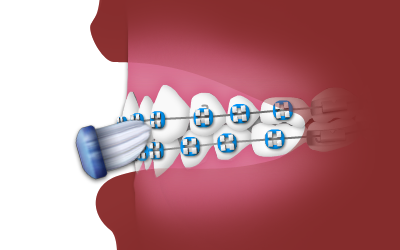 Use a toothbrush with soft bristles and a small strip of fluoride toothpaste. When you brush your teeth, move the brush in small, circular motions to reach food particles that may be under your gum line. Hold the toothbrush at an angle and brush slowly and carefully, covering all areas between teeth, between braces and the surface of each tooth. It will take you several minutes to thoroughly brush your teeth. Brush up on the lower teeth, down on the upper teeth and the outside, inside and chewing surface of your front and back teeth. Brush your tongue and the roof of your mouth before you rinse.
Use a toothbrush with soft bristles and a small strip of fluoride toothpaste. When you brush your teeth, move the brush in small, circular motions to reach food particles that may be under your gum line. Hold the toothbrush at an angle and brush slowly and carefully, covering all areas between teeth, between braces and the surface of each tooth. It will take you several minutes to thoroughly brush your teeth. Brush up on the lower teeth, down on the upper teeth and the outside, inside and chewing surface of your front and back teeth. Brush your tongue and the roof of your mouth before you rinse.
Especially during orthodontic treatment, brush your teeth four times daily to avoid the accumulation of food particles in your teeth and braces:
- In the morning after breakfast
- After lunch or right after school
- After dinner
- At bedtime
You will need to replace your toothbrush more often due to your appliances. As soon as the bristles start to wear down or fray, replace your toothbrush with a new one. It may be difficult for your toothbrush to reach some areas under your archwire. Do not swallow any toothpaste; rinse your mouth thoroughly with water after you finish brushing. It is important to floss, use an antibacterial mouthwash and use a fluoride treatment for optimal oral hygiene.
Flossing while Wearing Braces
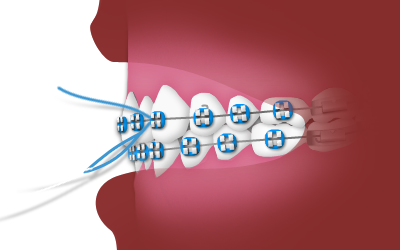 For areas between the teeth that a toothbrush can't reach, use dental floss to remove food particles and plaque. Flossing takes more time and patience when you are wearing braces, but it is important to floss your teeth every day.
For areas between the teeth that a toothbrush can't reach, use dental floss to remove food particles and plaque. Flossing takes more time and patience when you are wearing braces, but it is important to floss your teeth every day.
Use a reusable floss threader to floss under your archwire daily. Pull a small length of floss from the dispenser through the threader, and slide it up and down along the front of each tooth. You will be able to feel when the tooth is clean and hear the squeak of the floss against your clean teeth. Use care around your archwire, and do not floss too forcefully around it or put too much pressure on it. After you floss between your archwire and braces, floss between your other teeth and gums.
If you are flossing without a floss threader, pull a small length of floss from the dispenser. Wrap the ends of the floss tightly around your middle fingers. Guide the floss between all teeth to the gum line, pulling out food particles or plaque. Unwrap clean floss from around your fingers as you go, so that you have used the floss from beginning to end when you finish. Floss behind all of your back teeth.
Floss at night to make sure your teeth are clean before you go to bed. When you first begin flossing around your braces, your gums may bleed a little. If the bleeding does not stop after the first few times flossing, please inform a staff member at your next appointment.
Common Problems
When a person's teeth or jaws do not fit together properly, orthodontic treatment may be necessary to correct the problem. If left untreated, these orthodontic problems, often referred to as malocclusions, can cause speech difficulty, premature wear of the teeth and protective enamel, and even increase the chance of injury to the teeth and jaw joints.
Underbite
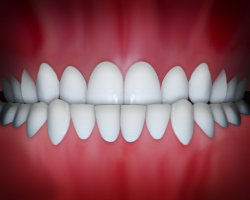 An underbite is characterized by the lower jaw extending too far out, causing the lower front teeth to sit in front of the upper front teeth.
An underbite is characterized by the lower jaw extending too far out, causing the lower front teeth to sit in front of the upper front teeth.
Crossbite
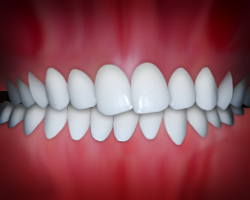 This malocclusion occurs when the upper teeth sit inside the lower teeth, which may cause tooth stratification and misaligned jaw growth. In order to close the mouth, patients usually move their lower jaw forward or to the side when closing. This incorrect bite results in an improper use of the lower jaws and sometimes brings about facial asymmetry.
This malocclusion occurs when the upper teeth sit inside the lower teeth, which may cause tooth stratification and misaligned jaw growth. In order to close the mouth, patients usually move their lower jaw forward or to the side when closing. This incorrect bite results in an improper use of the lower jaws and sometimes brings about facial asymmetry.
Upper Front Teeth Protrusion
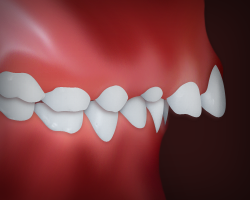 The appearance and function of your teeth are impacted by this type of bite. It is characterized by the upper teeth extending too far forward or the lower teeth not extending far enough forward.
The appearance and function of your teeth are impacted by this type of bite. It is characterized by the upper teeth extending too far forward or the lower teeth not extending far enough forward.
Overbite
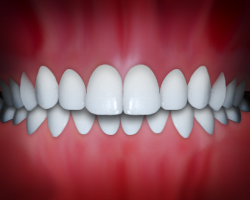 The upper front teeth extend too far out over the lower front teeth, sometimes causing the lower front teeth to bite into the roof of the mouth. Problems often associated with an overbite include a "gummy" smile, protruding lips and excessive incisor wear.
The upper front teeth extend too far out over the lower front teeth, sometimes causing the lower front teeth to bite into the roof of the mouth. Problems often associated with an overbite include a "gummy" smile, protruding lips and excessive incisor wear.
Crowding
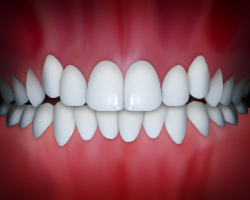 Crowding occurs when teeth have insufficient room to erupt from the gums. It is the most common reason for braces. Not only is crowding unattractive, but it has also been linked to periodontal problems and dental decay because it is harder to clean overlapping teeth's surfaces.
Crowding occurs when teeth have insufficient room to erupt from the gums. It is the most common reason for braces. Not only is crowding unattractive, but it has also been linked to periodontal problems and dental decay because it is harder to clean overlapping teeth's surfaces.
Spacing
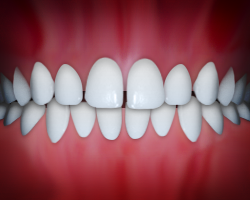 Spacing problems may be caused by missing teeth, or they may only be a cosmetic or aesthetic issue. Spacing is another popular reason for braces. The opposite of crowding, spacing is most commonly caused by excessive jaw room for the size of the erupting teeth.
Spacing problems may be caused by missing teeth, or they may only be a cosmetic or aesthetic issue. Spacing is another popular reason for braces. The opposite of crowding, spacing is most commonly caused by excessive jaw room for the size of the erupting teeth.
Openbite
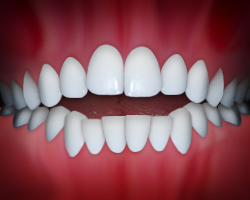 Proper chewing is impacted by this type of bite, in which the upper and lower front teeth do not overlap. Openbite may cause a number of unwanted habits, such as tongue thrusting or thumb sucking. An early evaluation and intervention is essential in correcting an openbite.
Proper chewing is impacted by this type of bite, in which the upper and lower front teeth do not overlap. Openbite may cause a number of unwanted habits, such as tongue thrusting or thumb sucking. An early evaluation and intervention is essential in correcting an openbite.
Dental Midlines not Matched
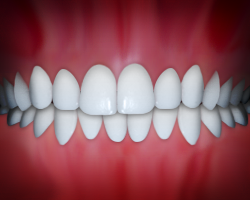 Dental midlines that do not match are evident when the back bite does not fit and match appropriately. This may negatively impact jaw function and proper dental function.
Dental midlines that do not match are evident when the back bite does not fit and match appropriately. This may negatively impact jaw function and proper dental function.
Foods to Avoid
While you are wearing braces, please avoid eating hard foods, sticky foods and foods high in sugar. Hard foods can break or damage the wires and brackets, and sticky foods can get caught between the wires and brackets. Minimize the amount of sugary foods you eat; the sugar can cause tooth decay and other related problems.
Examples of Sticky Foods to Avoid: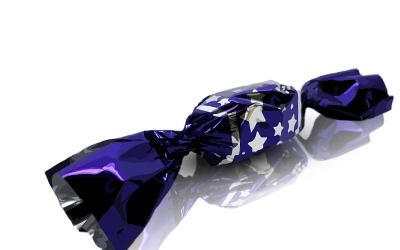
- Gum (sugar-free or regular)
- Licorice
- Sugar Daddies
- Toffee
- Tootsie Rolls
- Caramels
- Starburst
Examples of Hard Foods to Avoid:
- Ice
- Nuts
- Hard taco shells
- French bread crust/rolls
- Corn on the cob
- Apples and carrots (unless cut into small pieces)
- Bagels
- Chips
- Jolly Ranchers
- Pizza crust
- Uncooked carrots (unless cut)
Minimize Sugary Foods like: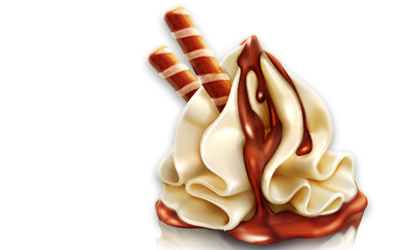
- Cake
- Ice Cream
- Cookies
- Pie
- Candy
Only Once a Day:
- Soda
- Sweetened tea
- Gatorade
- Kool-Aid
- Drinks with sugar
We encourage patients to quit bad habits, such as fingernail biting, pencil and pen chewing and chewing on foreign objects. All of these activities can break or damage your braces.
It's important to regularly check your braces for bent or loose wires and brackets. If you have a loose/broken wire or bracket, please call our office immediately to arrange a repair appointment.
